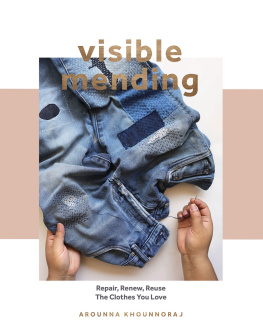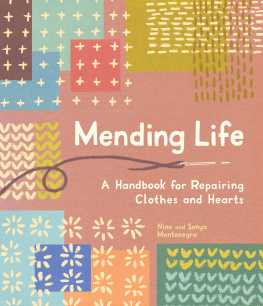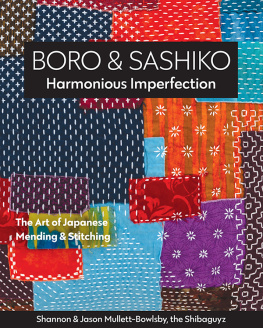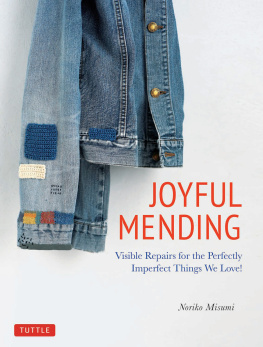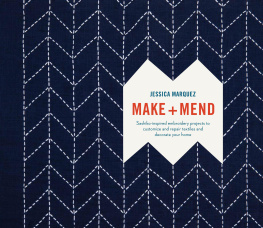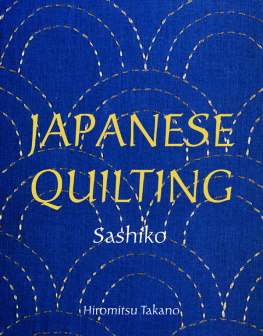Saki Iiduka - Sashiko for Making & Mending: 15 Simple Japanese Embroidery Projects
Here you can read online Saki Iiduka - Sashiko for Making & Mending: 15 Simple Japanese Embroidery Projects full text of the book (entire story) in english for free. Download pdf and epub, get meaning, cover and reviews about this ebook. year: 2021, publisher: Tuttle Publishing, genre: Home and family. Description of the work, (preface) as well as reviews are available. Best literature library LitArk.com created for fans of good reading and offers a wide selection of genres:
Romance novel
Science fiction
Adventure
Detective
Science
History
Home and family
Prose
Art
Politics
Computer
Non-fiction
Religion
Business
Children
Humor
Choose a favorite category and find really read worthwhile books. Enjoy immersion in the world of imagination, feel the emotions of the characters or learn something new for yourself, make an fascinating discovery.
- Book:Sashiko for Making & Mending: 15 Simple Japanese Embroidery Projects
- Author:
- Publisher:Tuttle Publishing
- Genre:
- Year:2021
- Rating:4 / 5
- Favourites:Add to favourites
- Your mark:
Sashiko for Making & Mending: 15 Simple Japanese Embroidery Projects: summary, description and annotation
We offer to read an annotation, description, summary or preface (depends on what the author of the book "Sashiko for Making & Mending: 15 Simple Japanese Embroidery Projects" wrote himself). If you haven't found the necessary information about the book — write in the comments, we will try to find it.
Sashiko for Making and Mending shows you how to use sashiko stitching to mend rips, repair things like fraying cuffs and create original accessories that look fabulous.
With this book, youll be able to embrace the visible mending movement--the practice of repairing high quality items you already own instead of replacing them with cheaper fast fashion alternatives. It also gives you the opportunity to practice the craft, with instructions for 15 handmade items, including:
- Gorgeous indigo pouches
- A rustic linen book cover
- Breezy, multipurpose cotton stoles
- A simple, elegant tote bag
- And so much more!
This book teaches many easy variations of the traditional sashiko stitches--highlighting the impact simple, well-executed stitching can have on everything from embellishing napkins to repairing a jacket. Its gorgeous, thoughtful aesthetic and high-functionality makes sashiko the perfect all-purpose embroidery!
Saki Iiduka: author's other books
Who wrote Sashiko for Making & Mending: 15 Simple Japanese Embroidery Projects? Find out the surname, the name of the author of the book and a list of all author's works by series.




